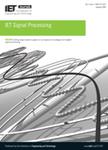版权所有:内蒙古大学图书馆 技术提供:维普资讯• 智图
内蒙古自治区呼和浩特市赛罕区大学西街235号 邮编: 010021

作者机构:Hong Kong Polytech Univ Dept Elect & Informat Engn Hung Hom Kowloon Hong Kong Peoples R China Nanjing Univ Sci & Technol Sch Elect & Opt Engn 200 Xiao Ling Wei St Nanjing Peoples R China
出 版 物:《IET SIGNAL PROCESSING》 (IET Signal Proc.)
年 卷 期:2020年第14卷第1期
页 面:1-14页
核心收录:
基 金:Hong Kong Research Grants Council [PolyU 152112/17E]
主 题:image texture video coding stereo image processing computational complexity depth map coding multiview video plus depth MVD international 3D video coding standard high efficiency video coding 3D-HEVC image texture high-computational complexity
摘 要:3D videos have attracted attention from academia and industry after great success in the film industry. Multiview video plus depth (MVD) is the most popular 3D video format to provide vivid 3D feeling and has been adopted as an international 3D video coding standard, namely 3D extension of high efficiency video coding (HEVC). MVD includes a limited number of textures and depth maps to synthesise virtual views. In MVD, depth samples describe the distance between a camera and an actual object as a grey-level image. The characteristics of depth maps are quite different from texture images. Consequently, new coding tools are designed for depth maps in 3D-HEVC to improve the coding efficiency at the expense of high-computational complexity, which faces great challenges in coding systems. Depth map coding is also an important technique in immersive media to support three degrees of freedom 3DoF+/6DoF applications such as virtual reality/augmented reality. The study starts with an overview of what has been done over the last decade in 3D-HEVC, especially depth map coding, regarding theories, methodologies, current research and state-of-the-art fast approaches. Following this, a comprehensive comparison of the reviewed techniques is presented, and an outlook on its future trends is provided.